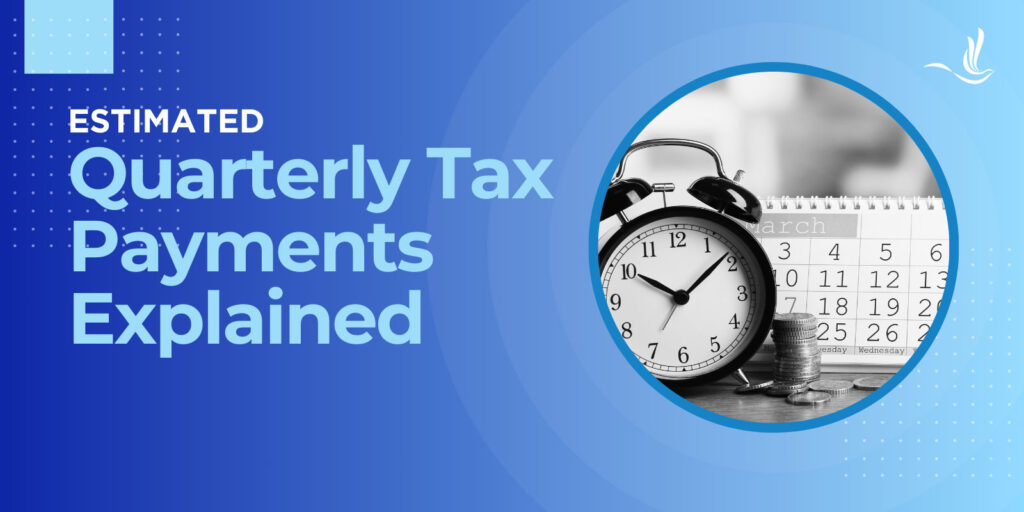
For freelancers, self-employed individuals, and small business owners, managing finances is an integral part of their professional journey. One key aspect of financial responsibility is handling taxes. For those with income not subject to withholding, estimated quarterly taxes become a crucial obligation. In this article, we will explore what estimated quarterly taxes are, why they matter, and how individuals can navigate this aspect of tax compliance.
What Are Estimated Quarterly Taxes?
Estimated quarterly taxes are periodic tax payments that individuals and businesses make to the IRS throughout the year. Unlike traditional employees who have taxes withheld from their paychecks, freelancers, self-employed individuals, and certain business owners are responsible for estimating their tax liability and making quarterly payments.
Who Needs to Pay Estimated Quarterly Taxes?
Those who anticipate owing $1,000 or more in taxes are generally required to pay estimated quarterly taxes. Remember, this is after subtracting their withholding and refundable credits. This includes freelancers, independent contractors, sole proprietors, partners in partnerships, and S corporation shareholders. Additionally, if you had a tax liability in the previous year, the IRS may require you to pay estimated taxes. This is the case even if you expect a lower income in the current year. Corporations may have to make estimated tax payments if they expect to owe $500 or more in taxes.
Why Estimated Quarterly Taxes Matter
Failure to pay estimated quarterly taxes can result in penalties and interest on the unpaid amount. By meeting the quarterly deadlines, individuals can avoid unnecessary financial burdens and maintain compliance with tax regulations. It also allows individuals to budget effectively and avoid a large, lump-sum tax payment at the end of the year. This approach promotes financial stability and helps prevent unexpected financial setbacks.
How to Calculate Your Estimated Quarterly Tax Payments
To make things easier when calculating your estimated tax payments, you can use last year’s tax liability as a baseline. Then divide that amount into four equal payments. Typically, if you pay 100% of what you owed last year, you are more likely to be protected from underpayment penalties. However if you expect to earn more or less than last year, you should calculate it another way.
Calculate Your Estimated Income
Begin by estimating your adjusted gross income (AGI) for the year. Be sure to factor in any changes in your financial situation. This could include fluctuations in income, additional sources of revenue, or changes in business expenses.
Determine Deductions and Credits
Consider potential deductions and credits that may apply to your situation. This includes business expenses, self-employment tax deductions, and any eligible tax credits. Subtracting these from your estimated income will give you a more accurate picture of your taxable income.
Use IRS Form 1040-ES
The IRS provides Form 1040-ES, which includes a worksheet to help individuals estimate their quarterly tax payments. This form guides you through the process of calculating your estimated tax liability and provides payment vouchers for each quarter.
Set Aside Funds Regularly
Consider setting aside a portion of your income in a dedicated savings account. This can help ensure you have the funds available to make quarterly payments. A general rule of thumb is to set aside 30-35% of your income for your taxes. This disciplined approach can help you meet your tax obligations without disrupting your cash flow.
Mark Key Deadlines
The IRS has established specific deadlines for estimated quarterly tax payments. These deadlines are April 15, June 15, September 15, and January 15 of the following year. If the due date falls on a weekend of a legal holiday, the payment will be due on the next non-holiday business day. Mark these dates on your calendar and set reminders to avoid missing any deadlines. Also, note that you may pay your entire estimated tax in one payment.
The final quarterly tax payment for 2023 is due on January 16, 2024. The quarterly tax payment deadlines for 2024 are:
- Q1 of 2024: April 15, 2024
- Q2 of 2024: June 17, 2024
- Q3 of 2024: September 16, 2024
- Q4 of 2024: January 15, 2025
Make Adjustments as Needed
If you find that you overestimate or underestimate your earnings in Q1, complete another Form 1040-ES to recalculate your estimated tax for the next quarter. You’ll want to adjust until you get an accurate estimate to avoid penalties and interest.
How to Pay Your Estimated Quarterly Taxes
You can make your estimated tax payments using the following methods:
- Pay Via Mail: Pay by mailing your completed Form 1040-ES. The address you will mail it to varies based on the state you live in and your residency. Be sure to check the IRS website for clarification.
- Pay Online: You can pay through one of the many electronic options the IRS offers. These include through your IRS Online Account, Direct Pay, and the Electronic Federal Tax Payment System (EFTPS).
- Pay Via Phone: You can pay over the phone by calling the IRS. However, this option may not be best due to wait times.
- Pay Via the IRS2Go App: The IRS2Go mobile app allows you to make secure payments to the IRS via Direct Pay or through an approved payment processor.
Tax Help for Those Who Make Estimated Quarterly Tax Payments
Navigating the world of estimated quarterly taxes is a crucial aspect of financial responsibility for freelancers, self-employed individuals, and small business owners. By understanding the importance of these payments, calculating your tax liability accurately, and following the IRS guidelines, you can seamlessly incorporate estimated quarterly taxes into your financial routine, ensuring compliance and financial stability throughout the year. Optima Tax Relief is the nation’s leading tax resolution firm with over $1 billion in resolved tax liabilities.
If You Need Tax Help, Contact Us Today for a Free Consultation